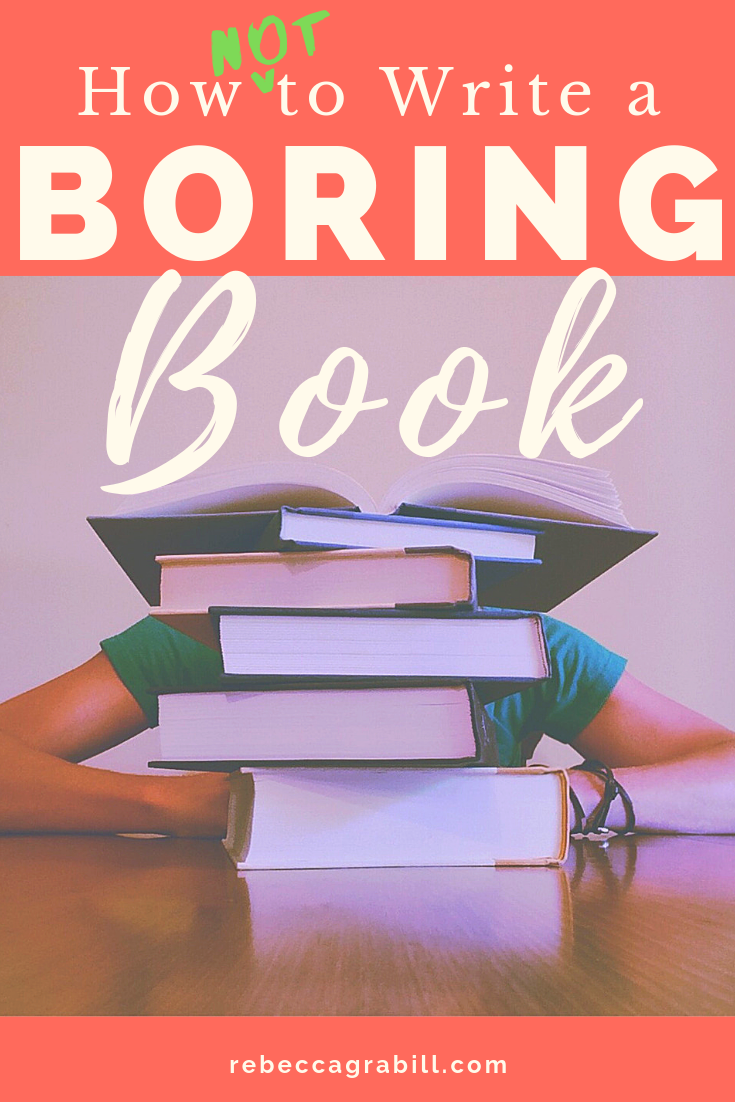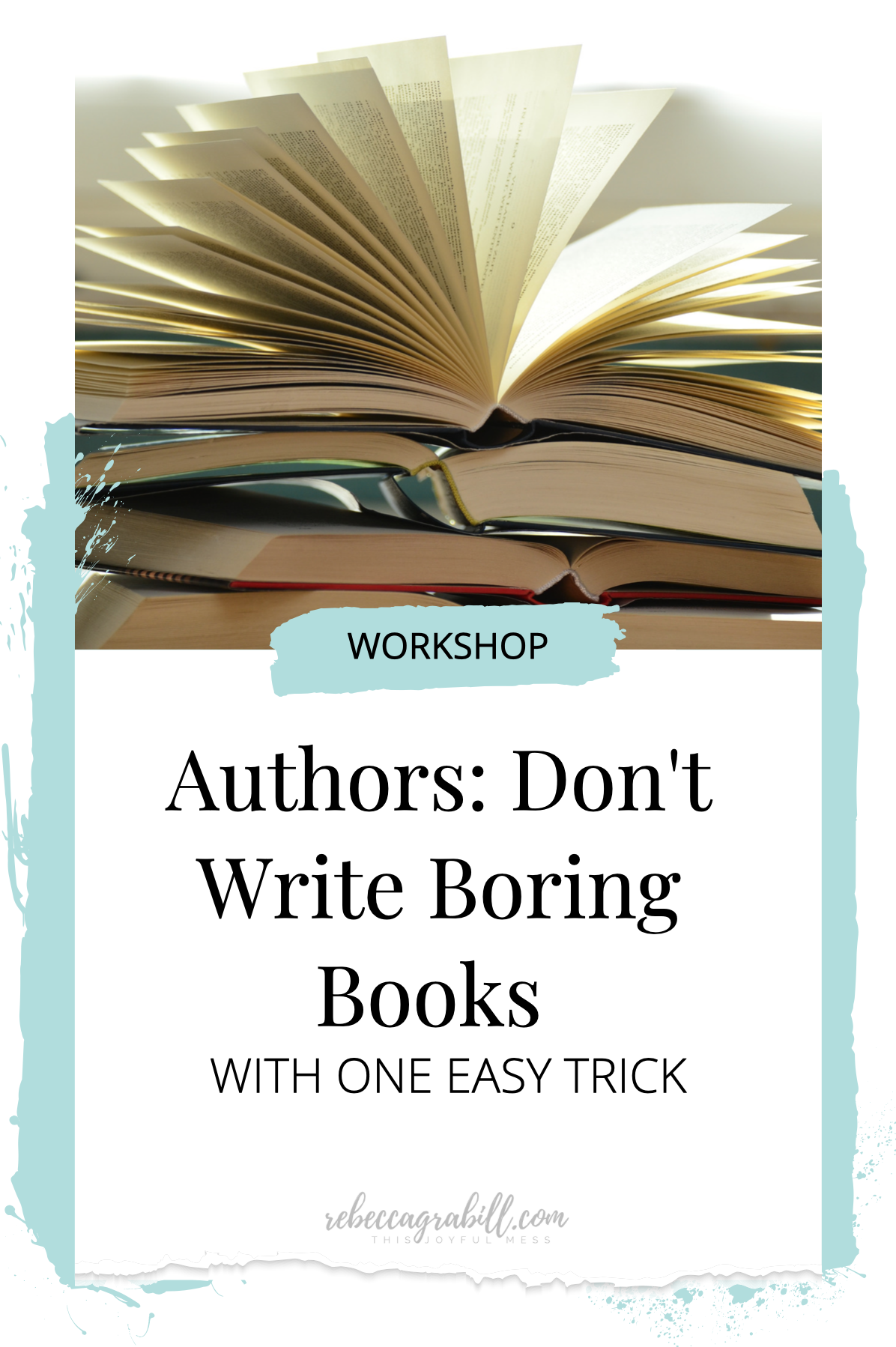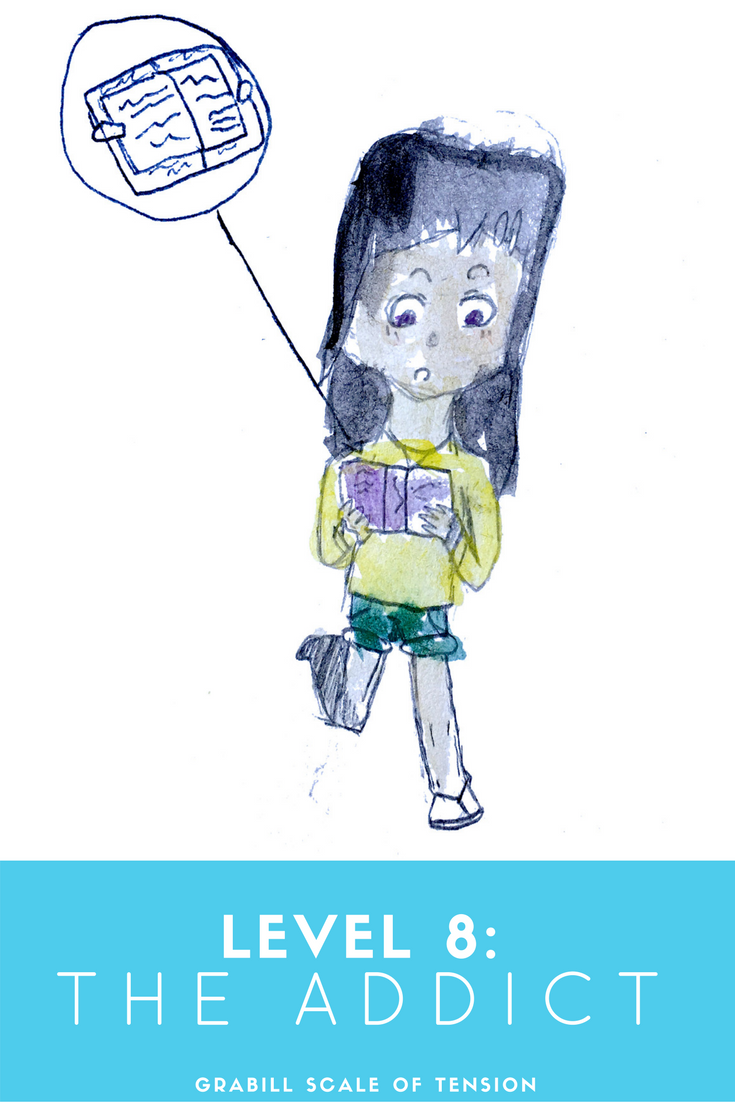How (not) to Write a Boring Book
I first started thinking about tension when I heard Donald Maass speak at a conference years ago. He described how the simple scene of a man looking at his watch while waiting for a bus can go from bland to Bang in a matter of words. Since then I’ve noticed the varying levels of tension, both in books I’ve enjoyed and in those I haven’t. Some non-stop-action stories have bored me to tears, and many (many) literary tomes have taken up permanent residence on my night table—because they work a little too well.
After working on the scale below, I began applying it to my own work. How? Easy.
Take a current manuscript and read over each scene. Assign each scene a numerical value between 1 and 10 using the definitions below, and you’ll have a map of the emotional tension of your entire story. You can look at the numbers and plot them on a graph to show the rise and fall of tension throughout the entire book.
What’s the magic formula for a boring book? Read on! It may surprise you.
Level One: The Jerk
Traditionally used in a school lecture context, The Jerk is the unconscious spasm of the head and neck when the attendee, or in our case, the reader, nods off to sleep. The weight of the head then causes the reader to jerk it back to an upright position. If a text alert dings, the reader will leap to their device quickly. “I’m SO glad you messaged!”
Level Two: Because It’s Good For Me
At this level, the writing is faintly interesting, although not really, and the reader pushes ever onward because the book is a. highly regarded (although she’s having trouble seeing why), b. by someone famous (which might explain why it’s in print), c. a classic (and thus the reading is, indeed, good for her).
Quite typically long passages of superfluous description reside at Level Two, along with, perhaps, long passages of interior monologue, or long passages in general in which nothing all that interesting happens. Many readers will skim or skip these passages altogether. Many readers might glance at their phone with longing, willing it to ring. But it never will.
Level Three: Because It’s Good For Me, and Good
Very similar to Level Two, Level Three is writing that might otherwise be excruciating, except that the language is so heart-stoppingly beautiful that the reader cannot possibly not read it. Many literary novels linger here.
Level Four: Arousal
The writer has created a growing sense of interest. Aunt Belinda is missing, really? What was that sound from beneath the stairs? The reader feels more than idle curiosity, but still has little problem setting the book aside to respond to a text.
Level Five: Things That Make You Go Hmmm …
Interesting, very interesting. The story is moving, the pacing good. A reader might find himself skipping ahead to see what happens later on the page, or flipping a few pages forward to check how far until the next break. If it’s not too far, he’ll keep reading. If it’s twenty pages off, he might still keep reading. Anyone who calls may have to leave a voicemail.
Level Six: Zen
This is the Ooom state. The reader is transported to the fictional world and reads every word on the page without thought. She neither skips ahead nor sighs with impatience, and if someone calls, anyone, she is likely to answer and begin telling the caller about this fantastic book she’s reading, or perhaps read selections to him or her.
Level Seven: Wheat and Chaff
The tension increases slightly beyond the level of comfort. The reader is both lost in the story and held captive by it. He may be tempted to look ahead, just to make sure the hero doesn’t really die in the desert, or to test his suspicion that Herman was the killer all along. Strong readers will prevail; the weak will peek.
Level Eight: The Addict
The reader might begin to show certain addictive behaviors. If interrupted by family life, for example, she may sneak the book into the car and read it surreptitiously while her husband discusses the sorry state of the laundry. She may try to ignore the buzzing phone, or switch it to airplane mode, and if she does answer, it is with a gruff, “Whatdayawant?”
The reader may begin to lie. “I’m only going to the bathroom,” or, “The chapter’s almost done – then I’ll come up to bed, dear.” And the reader will almost certainly neglect her daily responsibilities, everything from work or childcare to eating regularly and personal hygiene.
Level Nine: The Flip
Even the strong may falter. He just can’t take it anymore, so he will skip ahead a few pages. But then he will skip back – he doesn’t want to miss anything – only to skip ahead again, and then back. Some readers may grow angry. “I don’t have time for this! Don’t I have better things to do?” But no sooner has the book been flung against the wall, he is crawling to retrieve it. Like transition in labor, this level passes quickly into the next.
Level Ten: Climax
Here the reader slows once more, unwilling to miss a single sentence, a single word. The physical world is inconsequential. An hour may seem a moment, and a reader might push past endurance – of hunger, sleep, her family’s good will, and bladder control.
How do You Write a Boring Book?
Go ahead, apply it to some favorite books. Does the savvy author open his book with tension at Level One, then gradually escalate to a climax of Ten? Or, wouldn’t it be better to write the whole book at Level Ten?
“Flatlining at any level of tension – even a Ten – will lead to a boring book.”
I have a hard time believing a book opening at Level One would ever see publication, regardless of the killer climax.
And here’s the most surprising truth: Flatlining at any level of tension – even a Ten – will lead to a boring book. Tension is relative and fluctuates, and most authors will agree that tension is like music, it rises and falls. Oftentimes the contrast and variability are what lend beauty, intrigue, and listenability to the piece. Likewise, a book can have rising and falling action with mini-climaxes, all building for the grand finale of the climax, which doesn’t necessarily have to reach a level 10.
Why did I call this the Grabill Scale of Literary Tension? Well, doesn’t everybody name these things after themselves? Mohs Scale of Hardness, The Fugita Tornado Damage Scale (F-Scale), The Richter Magnitude Scale?
**Drawings by Maggie Grabill (11)












Here you’ll find my TOP FIVE easy ways to set your creativity ABLAZE. These ideas can be used by anyone—even if you (mistakenly) think you’re not creative. We’re all creative. It’s part of what it means to be human, but we each express our creativity in our own uniquely wonderful ways. Download the full list to find out more!